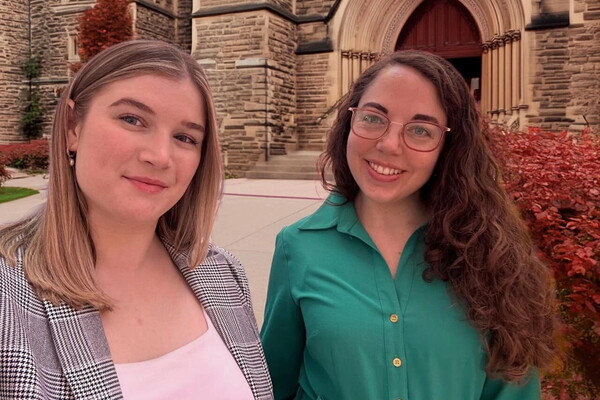Main Second Level Navigation
Breadcrumbs
- Home
- News & Events
- Recent News
- U of T experts on the threat of drug-resistant fungi
U of T experts on the threat of drug-resistant fungi

We may not need to worry about the zombie fungus in the hit HBO television series The Last of Us, but there is another real-life fungal pathogen that we should be paying close attention to.
Candida auris is a fungus that can cause serious, and sometimes fatal, infections in humans, particularly those who have weakened immune systems. It is also difficult to treat because it is often resistant to one or more antifungal drugs.
In March 2023, the U.S. Centers for Disease Control and Prevention published new data about the alarming spread of C. auris among American health care facilities. While cases in Canada remain low — Quebec reported its first outbreak in September 2022 — clinicians and researchers in this country are highly concerned about the fungus and its impact on our health-care system.
To help us understand the threat posed by C. auris, we spoke to two experts from the Emerging and Pandemic Infections Consortium.
Leah Cowen is vice-president, research and innovation, and strategic initiatives at U of T and a professor of molecular genetics in U of T’s Temerty Faculty of Medicine. She is a world leader in infectious fungal diseases and holds a Canada Research Chair in Microbial Genomics and Infectious Diseases.
Jennie Johnstone is an infectious diseases physician and the medical director of infection prevention and control at Sinai Health. She is also the newly appointed division director of infectious diseases in the department of medicine at U of T’s Temerty Faculty of Medicine and an associate professor in the department of laboratory medicine and pathobiology and at the Dalla Lana School of Public Health.
What do we know about the number of C. auris cases in Canada and in Ontario specifically?
JJ: In Canada, the number of cases is still relatively low. The most recent national data showed around 35 cases but there are a few caveats about our data. Right now, we’re mostly poised to identify clinical cases but we know clinical cases only represent about 5 to 10 per cent of people who are colonized. You can have C. auris on your body without knowing it’s there. Without a screening program, we know we will miss at-risk asymptomatic patients who may be colonized. The other challenge we have here in Ontario is that, at this time, C. auris infection is not a reportable disease. This means that there’s no requirement to report cases to local public health. Without a screening and surveillance system and mandatory reporting, we don’t have a great handle on what’s happening within our walls in our hospitals and long-term care homes.
What makes this pathogen so worrisome?
JJ: We’re particularly worried about C. auris for two reasons. One, it has the ability to become resistant to multiple or in some cases, all available drugs. The vast majority of strains are resistant to our first line therapy, many are resistant to our second line drugs, and there have been rare cases reported where the isolate is resistant to all therapies. Having a Candida infection is never good, but if you have one that we can’t treat, that’s especially bad. Secondly, most Candida species do not survive well in the environment but C. auris is different. It persists in the environment and is very difficult to kill on surfaces. Some of the cleaning agents we use in our hospitals don’t work, which means it can contaminate an environment very quickly. If this organism gets into a place like a long-term care home that has hard-to-clean furniture like couches and chairs with soft material, coupled with disinfectants that may not even work and a population that’s very vulnerable, it becomes the perfect storm. That’s what we’ve seen in the US with very large outbreaks associated with long-term care homes.
What do we know about why and how C. auris became so drug resistant?
LC: We have lots of hypotheses but it’s hard to say for certain. What we do know is that Candida auris seems able to adapt and acquire resistance relatively quickly. The mechanisms underlying how it becomes drug resistant are similar to what we’ve seen in other fungal pathogens. For example, we see mutations in the drug target gene and activation of drug pumps that pump small molecules out of the cell.
Compared to antibiotics that target bacteria, there are very few antifungal drugs on the market. Why is that?
LC: There are a few reasons for this. First, fungi are closely related to their human. That means a lot of the essential targets in fungi are also conserved in humans, so if you attack it in the fungus, you may wind up attacking the same target in the host, which could cause toxic side effects. The other part of the story is that fungi have largely been overlooked from a research and funding perspective. There’s been less people working on fungi than bacteria and viruses and less investment in the area. One reason for this is that fungal infections are primarily a health threat for people with weakened immune systems — the elderly, people taking immunosuppressive drugs after organ transplant or for chemotherapy, those with HIV, and beyond. As the population of people who are immunosuppressed grows thanks to advances in modern medicine, we’re seeing a massive increase in the impact of fungal infections on human lives. That’s why it’s only been recently that fungal pathogens have been recognized as a profound threat to human health globally.
How is research helping to tackle the growing threat of drug-resistant fungal pathogens?
LC: Thanks to advances in research, there’s been progress in drug discovery with two new classes of compounds moving forward that work in distinct ways compared to existing drugs. So, we’re excited to see those move forward. In our lab, we’re taking a two-pronged approach to address this challenge. The first is to identify promising new targets by building a large mutant library where we can systematically control the expression of every gene in the pathogen. That allows us to ask what genes are required for drug resistance and what genes are required for survival of the pathogen? If we can solve the structure of those targets, we can see which ones might be druggable and we can engage with medicinal chemists to synthesize compounds that would work. The complementary approach that we often take is to screen libraries of molecules to look for bioactive compounds that either directly kill the fungus or synergize with an existing antifungal to improve its effectiveness. Once we identify interesting molecules, we work to identify what they target.
What can we do now to prepare for C. auris showing up in our hospitals and long-term care homes?
JJ: We’ve had the benefit of watching other jurisdictions deal with C. auris outbreaks so we can learn a lot from those experiences. Ultimately, having C. auris infection as a reportable disease will be important because it will mobilize resources, facilitate information sharing between healthcare settings and make sure that we can track our numbers. Hospitals and long-term care homes should start developing screening programs which will detect C. auris in patients with risk factors for colonization, and we need to make sure that we are preparing laboratories so that they are ready to receive screening specimens. From a research innovation and biomanufacturing perspective, how can we improve diagnostic tools for C. auris so that testing is cheaper and faster? There are also learnings from the COVID-19 pandemic that we can use to strengthen our preparedness. For example, building on the relationships that were established between hospitals, long-term care homes and public health will be critical. C. auris is coming (if it’s not already here) and we have to be prepared so that we can mobilize together as a team as quickly as possible to contain it.
LC: I would also emphasize that there are lots of other fungal pathogens that are also very deadly and for which we have very few treatment options. Last year, the World Health Organization developed its first fungal priority pathogens list to guide research, development and public health action. C. auris is one of four fungal pathogens in the highest priority group. We are not paying enough attention to deadly fungal diseases as a whole, and the lack of antifungals is an urgent and profound threat that we need to address through more investments in research.
News


